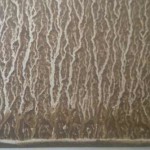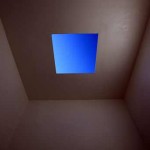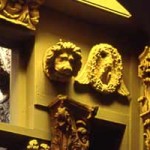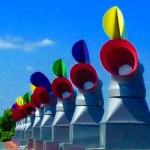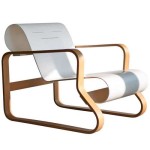World religions
We have been inspired by:
- Thich Nhat Hahn, a Zen Buddhist monk who wrote Love Letter to the Earth
- Pope Francis in his encyclical letter Laudato Si on Care for Our Common Home
- the Islamic Declaration on Global Climate Change
- Rabbi Lawrence Troster who wrote Tikkun Olam and Environmental Restoration
Download We are the earth (PDF 7MB) to see how we displayed the quotations from these sources at our latest zero carbon house open days.
Wabi-sabi
Wabi-sabi is a Japanese philosophy about valuing imperfection – the quality or patina that comes with age or wear or repair.
Wabi sabi is a beauty of things imperfect, impermanent and incomplete.
It is a beauty of things modest and humble.
It is a beauty of things unconventional
(Leonard Koren: Wabi-Sabi for Artists, Designers, Poets and Philosophers)
The exposed internal brick work of zero carbon house and created cracked earth floors, delighting in the qualities of age, imperfection and humility echo the wabi-sabi aesthetic.
Antony Gormley
Richard Long
The English artist Richard Long has worked for many years with very simple materials including earth or mud. The same year zero carbon house was completed (2009) saw his exhibition Heaven and Earth at the Tate in London. Richard Long’s work shows there are no limits to the imaginative use of earth…
James Turrell
The precisely-framed slot of glazing (top picture) runs full length over the double-height living room. With its long angled wall, it’s a small homage to the American artist James Turrell. His Skyspace installations focus contemplative views of ever-changing colours and moods of the sky and clouds. It is entrancing that a small piece of the sky can become so intense…
John Soane
Alvar Aalto
Alvar Alto was Finland’s leading C20 Modern architect. The hallmarks of his approach are still highly relevant today. Natural building materials. Natural lighting and roof-lighting, sometimes coupled with subtle angles or unexpected organic building geometry in plan and section. Seamless design of internal and external spaces. Timeless furniture design.
BedZED
BedZED was the brainchild of Bill Dunster (architect) and Pooran Desai (visionary developer). The name comes from Beddington (in London) Zero Emissions Developmemt. 182 zero carbon homes were built, 2002, and low embodied energy, transport, passive heat recovery ventilation (with funky wind cowls) all integrated.
Brenda and Robert Vale
Brenda and Robert Vale taught for a while at the Nottingham School of Architecture. They built their own ultra-low energy house in the 1990s and described their whole approach in the book The New Autonomous House. Both the house and the thinking behind it were pioneering steps in UK sustainable building, in the days when hardly anyone took it seriously.
You might also be interested in:
